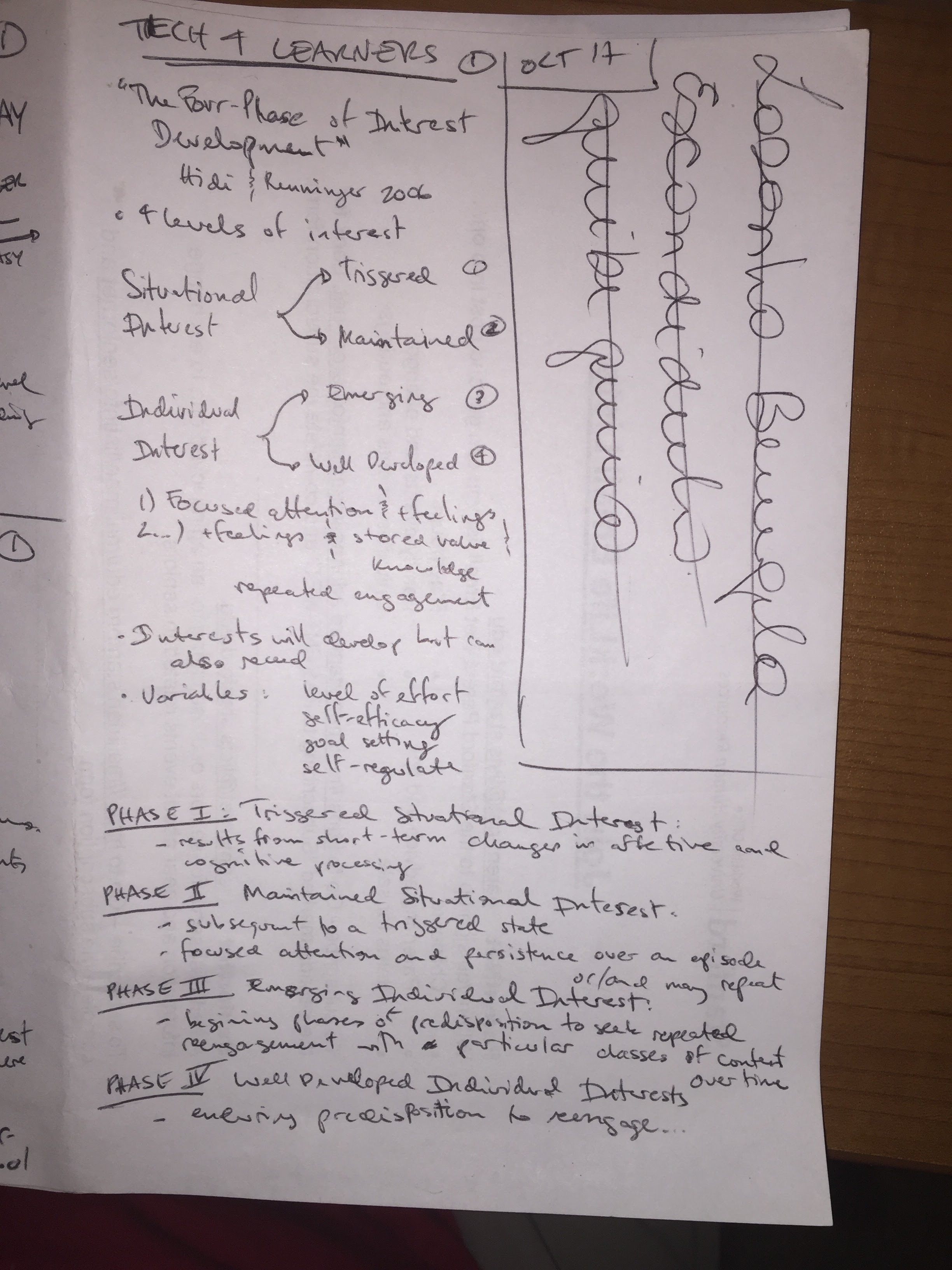Reading:
Notes:
Assignment:
Submit 3 paragraphs synthesizing the article. Describe the big idea, articulate any questions or concerns it brings up for you, and reflect on how it might inform the design of a learning tool.
Bonus: can you think of a time when you yourself developed an interest in this way? After submitting, take five minutes to read the responses of other students (if you’re first, you might have to come back later”. “Like” anyone whose story is similar to your own experience.
Response:
The big idea I got out of this article is that levels of interest can be more easily categorized, described, measured and improved if the described Four-Phase Model of Interest Development is utilized.
The model’s main hypothesis is that the interaction of affect and knowledge along with positive feelings and opportunities are key factors in developing “well-developed individual interest”.
The model makes a distinction between “situational” and “individual” where the first involves interaction with the environment and the latter involves an internal initiation.
Each phase is further broken down into “triggered and maintained” and “emerging and well-developed”.
| Situational Interest | Triggered | Short-term – affective & cognitive processing – aroused by external environment |
| Maintained | Focused attention and persistence – project based learning, group work… | |
| Individual Interest | Emerging | Predisposition to seek repeated reengagement – starts asking questions |
| Well-developed | Enduring predisposition – develop own theories, seeks further sources of information – research |
The model seemed to have quite a practical approach in offering a framework to measure levels of interest in learners. The way that affect and knowledge were intertwined, dependent and mutually feeding made tremendous sense to me.
A personal example: paragliding.
- Triggered Situational Interest: a friend told me about paragliding and showed me some pictures. I felt like it was something cool to experience but knew nothing about it.
- Maintained Situational Interest: we went to the launch site and I watched him fly and played around with the equipment on the ground
- Emerging Individual Interest: I finally did a flight on my own and started asking more questions about flying, techniques to stay up in the air, risks and emergency procedures.
- Well-developed Individual Interest: 30 years later, I am planning on taking lessons and buying my own equipment to start flying as a real hobby.
Note that in the past 30 years I did not seek to fly on my own.The interest level regressed to the situational interest since, when provided with the opportunity (trip to Cape Town for example), I engaged in a tandem flight.
While reading the article I also loosely correlated the 4 phases into:
- Kindergarten- expose to information and hopefully we arouse interest
- Middle and High School – engage in activities and explore interests
- College/University – choose a field of study and engage repeatedly with subject matter
- Graduate School / Doctoral Programs – enduring predisposition to reengage
This model could be used to assess interest generation potential of features within the design process of learning tools. You could design the tool to offer specific content/activities directed to each phase of interest the learner is at. You could classify learners into each phase and attempt to ‘promote’ them to the next level with the appropriate actions.


